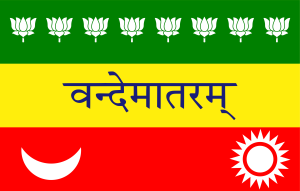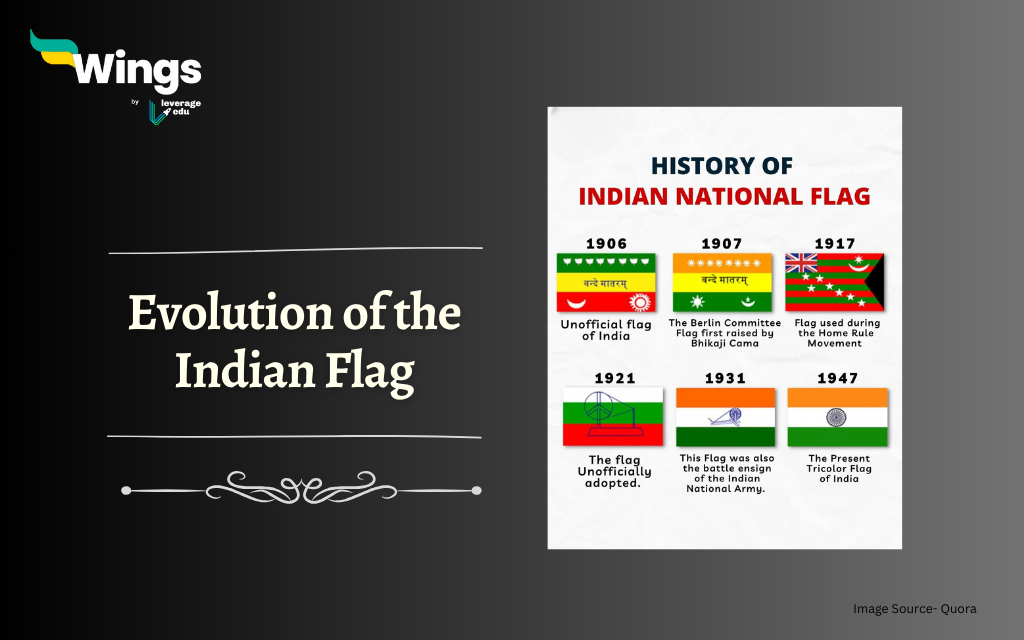The National Flag of India, a symbol of its years’s years-long struggle for independence and autonomous identity, was adopted on July 22, 1947. Throughout its history, the Indian national flag has undergone different significant transformations that represent the country’s political and social developments. In this blog, we will explore the glorious evolution of the Indian flag.
The Phases Of The Indian National Flag
Below we have mentioned the different phases of the evolution of the Indian flag.
1906: The journey of India’s national flag began with the hoisting of the first national flag in the Parsee Bagan Square in Calcutta (now Kolkata). It all happened during the Swadeshi and Boycott struggle of the Indian subcontinent. The flag featured three horizontal stripes of red, yellow, and green, with the words Vande Mataram inscribed in Hindi language.

1907: The second national flag of India was hoisted in Paris by Madam Bhikaji Cama and other exiled revolutionaries. Although it was quite similar to the previous flag, it bore minimal differences. For instance, the Berlin Committee flag of 1907 replaced the seven lotus flowers at the top with seven stars representing the Saptarishi. Moreover, the arrangement of colour horizontal stripes was also shifted from green at the top to orange. Interestingly, this flag was exhibited at a socialist conference in Berlin.

Also Read: Maratha Empire (1674-1818): History, Wars, Important Leaders
1917: The third flag was hoisted by Annie Besant and Bal Gangadhar Tilak in 1917 during the Home Rule movement. It signified the political struggle of the nation and the need for establishing the Indian subcontinent as autonomous. This flag featured alternating red and green stripes with seven white stars arranged in the saptarishi formation. Along with this, the flag included a Union Jack in the top left corner and a white crescent and star in the top right corner.

1921: A young freedom fighter known by the name Pingali Venkaiah presented the design of India’s national flag to Mahatma Gandhi. It all happened during the Bezwada (Vijayawada) session of Congress. This flag had three stripes of white, green, and reddish-orange colour. As evident, the co-existence of multiple colours signified the existence of multiple communities living peacefully in India. Apart from this, it featured a spinning wheel i.e. Ashoka Chakra in the centre, signifying the country’s progress and development post-independence.

Also Read: Lodi Dynasty- Exploring India’s Medieval History
1931: In 1931, a resolution was passed to adopt a tricolour flag as the national flag of India. This flag came with three horizontal stripes of saffron at the top, white in the middle, and green at the bottom. Along with this, it featured a blue spinning wheel at the centre.

1947: The year 1947 was a truly revolutionary year for India. The Constituent Assembly adopted the flag of free India in July 1947. The colours and their placement remained the same. However, Mahatma Gandhi’s spinning wheel was replaced by Ashoka’s Dharma Chakra, symbolizing truth and life. This is what we call the Tiranga of India.

Relevant Blogs
| Haryanka Dynasty | The Mauryan Empire (321-185 BC) |
| The Vijaynagar Empire (1336-1647) AD | Pallava Dynasty |
| Khilji Dynasty (1290–1320) | Satvahana Dynasty |
| Maharana Pratap | Gupta Empire |
| Ashoka | Chalukya Dynasty |
In this way, the transformation of the Indian flag reflects the nation’s journey from colonial rule to an independent democracy. This was all about the evolution of the Indian flag. If you wish to read more such informative blogs, check out our general knowledge page.
 One app for all your study abroad needs
One app for all your study abroad needs














